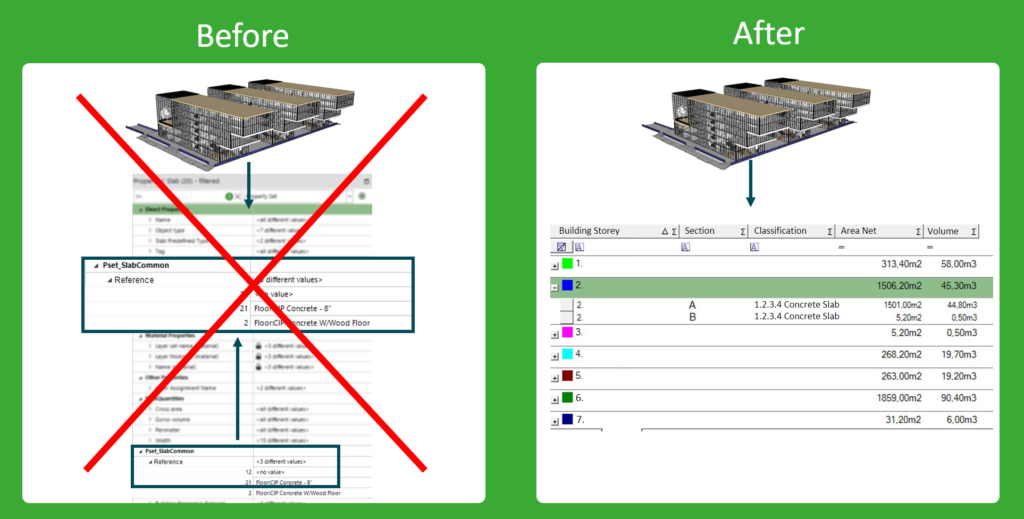05. Standardize and Normalize Data
The basis of any efficient digital data usage is standardized and normalized data. In construction BIM models are created from many different sources, which all produce different kinds of data. There are different design disciplines, different model author tools, and companies using these tools differently.
In order to use all this data in an efficient and reliable way it needs to be standardized and normalized.

This makes the data easier to use. You can create ready-made views and reports for the data that can be used for any model, model update, and project. Automated analysis and simulation become possible because the data is always the same. You only need right one set of rules for your automation. Ultimately standardized data can be used in analysis across the projects to the whole portfolio of projects.
Creating Your Own Property Sets
The very basic thing you can do with Simplebim is to create a standardized data structure for your models. In practice, this means creating your own property sets for the models. The properties can be defined by you, some BIM requirement, or you can use examples we provide as a basis. Note, this can be the same for models from all disciplines!
Mapping Data
Once you have standard data structure for your models, you can start mapping data to it. In practice, the same data from different disciplines, model author tools, and companies are not on the same property. To get a standardized result, the data needs to be mapped. In Simplebim this can be done either manually, or automatically based on rules.
Normalizing the Data
Once the data is in standard structure, it is much easier to clean and normalize. A common misunderstanding is that only the designers are allowed to edit the data. Yes, they are the authors of the design, but we are not talking about correcting the design issues here. Those are still the responsibility of the designer.
To use data efficiently, it needs other kinds of cleaning. There are misspellings, there are abbreviations, and there are the same thing described with different identifiers, or with different ‘resolution’. For example. An office can be identified with Office, office, ofice, off, Off, Of., of., Office Room, Big Office, small office, and so on… When using the data either in a report or in automation all these should be just one thing.
In Simplebim you can normalize the data either manually or automatically with rules.
Enriching the Data
The standardized data structure is not just used for design data. In Simplebim you can enrich the data in multiple ways. The enriched or derived data is also store in the same standardized structure. Learn more about data enrichment and data deriving in the related articles.
Validating the Data
Validation of the data is an integral part of data normalization, and makes the data reliable. Did you data processing produce right values? Are there actual design errors in the model? If there are you should know them, and either correct them, or communicate them to appropriate parties. Learn more about the validation features here.